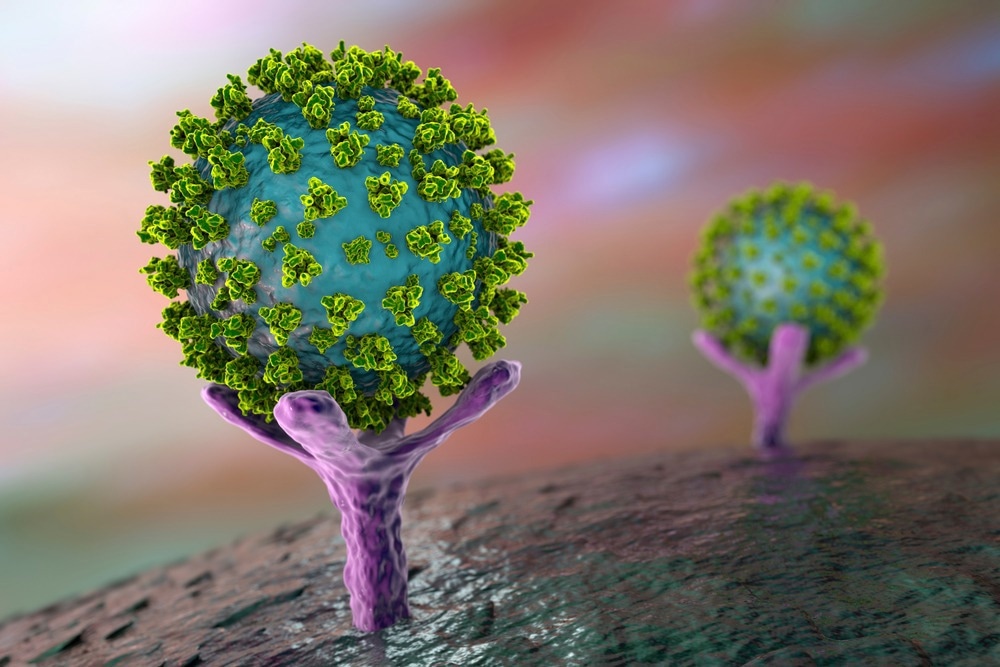A study published in the journal PLOS ONE describes the antiviral activity of flavor/fragrance compositions against severe acute respiratory syndrome coronavirus 2 (SARS-CoV-2). Flavor/fragrance compositions exhibit an antiviral effect by blocking viral entry into host cells.

Background
SARS-CoV-2, the causative pathogen of the coronavirus disease 2019 (COVID-19) pandemic, is a respiratory virus that primarily attacks epithelial cells in the mucosa of the human respiratory tract.
The interaction of the SARS-CoV-2 spike receptor binding domain (RBD) with host cell membrane receptor angiotensin converting enzyme 2 (ACE2) initiates the host cell entry process of SARS-CoV-2. Chemical compounds capable of preventing this interaction can serve as potential anti-SARS-CoV-2 agents.
Flavors and fragrances are organic compounds with distinctive tastes and pleasant odors. Many flavor/fragrance compositions are widely used because of many beneficial effects, including relaxing and refreshing effects. These compositions are safe and inexpensive and are mainly used as food additives, perfumes, and ingredients of daily commodities.
Flavor/fragrance compositions are known to interact directly with the mucosa of the respiratory and digestive tracts. In the current study, scientists have screened many flavor/fragrance compositions to identify the chemicals that can prevent spike RBD-ACE2 interaction and, thus, can act as potential therapeutic agents against COVID-19.
Screening and characterization of flavor/fragrance compositions
The scientists screened more than 300 flavor/fragrance compositions, including 59 natural extracts and 272 compounds. This led to the identification of 2 extracts and 12 compounds with significant inhibitory potency against the spike RBD-human ACE2 interaction. Most of the compositions showed a dose-dependent inhibitory effect.
SARS-CoV-2 variants with spike RBD mutations that emerged during the pandemic have shown significantly higher viral fitness than the original strain with wildtype RBD. Considering this, scientists selected 8 representative flavor/fragrance compositions and tested their ability to inhibit the interactions between different RBD mutants and ACE2.
The findings revealed that the compositions with inhibitory potency against wildtype RBD-ACE2 interaction can also inhibit the interactions between RBD mutants (L452R, E484K, N501Y, and K417N+E484K+N501Y) and ACE2 interactions. Specifically, two compounds, namely cinnamyl alcohol and helional, exhibited inhibitory potency against all kinds of RBD-ACE2 interactions, with cinnamyl alcohol showing the highest potency.
Furthermore, scientists used ACE2-expressing monkey kidney cells and recombinant omicron RBD to investigate whether identified flavor/fragrance compositions are effective against RBD-ACE2 interaction at the protein-cell level.
Among selected 8 representative flavor/fragrance compositions, 4 (helional, cinnamyl alcohol, β-phenylethyl alcohol, and benzyl alcohol) were less cytotoxic, and the other 4 (cinnamaldehyde, perilla alcohol, 3-phenyl-1-propanol, and 2-hydroxybenzaldehyde) were cytotoxic.
Among less toxic compositions, helional and cinnamyl alcohol showed inhibitory potency against the interaction between omicron RBD and ACE2-expressing cells. The highest inhibitory potency was observed for helional.
Study significance
The study identifies a set of flavor/fragrance compositions that can inhibit the interaction between SARS-CoV-2 spike RBD and human ACE2. In other words, these compositions have the potency to prevent host cell entry of SARS-CoV-2.
Among various compositions identified in the study, cinnamyl alcohol and helional exhibit the highest inhibitory potency with less cytotoxicity. As mentioned by scientists, these two compounds could serve as potential therapeutic agents against COVID-19.
Cinnamyl alcohol and helional are abundant in Cinnamomum spp. and are known to have antimicrobial and anti-pyretic activities. Helional acts as a specific ligand for the human odorant receptor.
- Nishimura, Y. et al. (2022) "Identification of anti-SARS-CoV-2 agents based on flavor/fragrance compositions that inhibit the interaction between the virus receptor binding domain and human angiotensin converting enzyme 2", PLOS ONE, 17(12), p. e0279182. doi: 10.1371/journal.pone.0279182. https://journals.plos.org/plosone/article?id=10.1371/journal.pone.0279182
Posted in: Medical Science News | Medical Research News | Disease/Infection News
Tags: ACE2, Alcohol, Angiotensin, Cell, Cell Membrane, Chemicals, Coronavirus, Coronavirus Disease COVID-19, covid-19, Cytotoxicity, Enzyme, Food, Food Additives, Kidney, Ligand, Membrane, Omicron, Pandemic, Pathogen, Protein, Receptor, Respiratory, Respiratory Virus, SARS, SARS-CoV-2, Severe Acute Respiratory, Severe Acute Respiratory Syndrome, Syndrome, Virus

Written by
Dr. Sanchari Sinha Dutta
Dr. Sanchari Sinha Dutta is a science communicator who believes in spreading the power of science in every corner of the world. She has a Bachelor of Science (B.Sc.) degree and a Master's of Science (M.Sc.) in biology and human physiology. Following her Master's degree, Sanchari went on to study a Ph.D. in human physiology. She has authored more than 10 original research articles, all of which have been published in world renowned international journals.
Source: Read Full Article